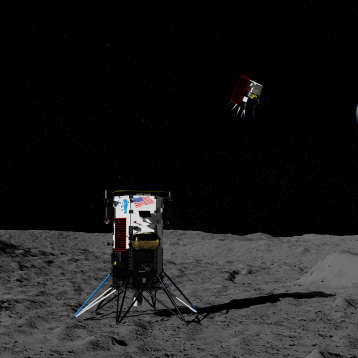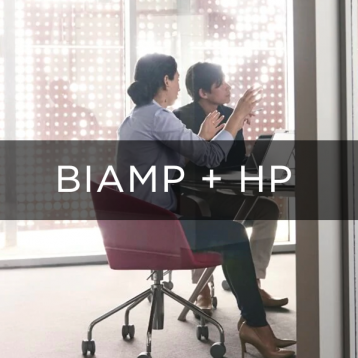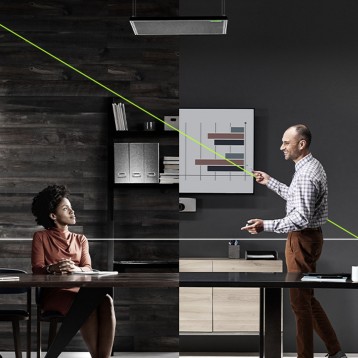John Vickerage relates one of his more challenging sales calls with advice to seize the opportunity of a sales visit to get what you really want out of it.
I can still feel the sense of foreboding that crept over me as I considered the request my prospect had just made. I was demonstrating a “modern” video conferencing system. In fact, it was a Sony Contact 1600. It had a detachable camera, built-in microphone and a 3-line ISDN module that you had to pay for separately and then slot into its little silver body.
The camera was a motorized EVI-D30 (I think). It whirred as it turned and faced my pre-occupied audience. I could tell that they were wondering how long this demonstration would last. Eager to get on with their working day, they hoped it would be over soon.
However, I knew something that they didn’t: I had practiced this demonstration a thousand times. I had varied it to show how easy it was for me to connect to a video call, or what child’s-play it was for the least technical person in the room to make a video call. I had jokes and anecdotes and answers to every possible question. However, I had not expected this.
I had successfully completed my pitch (dare I say “performance”), and believed I had the customer convinced that this was the solution for their video conferencing needs. Then they hit me with a thunderbolt.
“Erm…we actually already have a video conferencing system in the cupboard there,” said the lady that I took to be the key decision maker. “we’ve never actually used it though. In fact, I don’t even know if it works”
Closet solutions
She motioned for her owlish colleague to open the cupboard and wheel it out. I recognised it straight away. It was a Picturetel Venue 2000, complete with dinner-plate sized microphone and massive curved CRT displays.
“Crikey, how much did that cost you?” were the first words in my mind and therefore out of my mouth.
“About £40,000 each,” my decision-maker said. “We’ve got 10 of them.” “Before we make any decisions, I want to see if they work. No point buying new systems if the old ones work. Would you please set it up and make a call, so we can compare it with your Sony device?”
“No” said my brain. “Yes” said my mouth; there is not always a connection between the two, I have discovered.
“WHY DID YOU JUST AGREE TO THAT?” said the eyes of my colleague, whom had accompanied me to gain experience (the rest of him was there too, not just his eyes). My system was worth a 10th of the Picturetel system. The Sony was clearly the inferior technology.
Now committed, I started trying to figure out how to plug this monstrosity in. Cables were coiled around every inch of the black plastic stand. I started untwisting them as I nervously eyed the remote control.
Back from the dead
Eventually I was able to figure out where all of the plugs went. I was suddenly comforted by one thought; it didn’t matter if it didn’t work. That was a good result for me. Even if I plugged it in wrongly, then I could blame it on the unit that had sat dormant for so long that the circuit-boards were now compost. I smiled to myself as I pressed the standby button on the remote. I was certain this thing would not show any signs of life.
The bloody thing responded instantly. The camera spun around to look at us as if we’d called it by name. We were then greeted by a menu inviting me to key in the ISDN number of the far end.
By now curiosity had taken hold; despite my certainty that if this thing worked I would lose my sale, I had to know whether it would connect and how it would perform.
As the call connected I saw the Minecraft-like image of my colleague at the far-site. I waited for the pixels to dissipate, revealing an image from the far end that felt as though we were in the same room. This would prove a long wait. What we saw was the best it would ever be; not only was the video quality worse than the Sony, it was significantly worse. The audio was shocking too. I was delighted!
I turned around to face my impressed/ shocked/ deeply-bored audience triumphantly. I mentally raised my hands above my head ready to receive my adulation. I was now the all-conquering hero of the universe. Not only had a I fixed their expensive and broken Picturetel investment. I had also demonstrated the wonders of modern technology and why they needed to upgrade their systems.
Deliverance
They did just that, buying ten Sony Contact 1600s with accessories and extended maintenance contract. I even went back to train them to ensure they wouldn’t let their new investment take up more valuable cupboard space.
I have heard other stories of similar foolhardy endeavour:
A friend of a friend stood on an expensive word-processor to demonstrate its durability (he was later asked how he knew it wouldn’t break. His answer was “I didn’t, I just knew my competition had refused to stand on their product”).
An old supplier that allowed a prospect to attack his interactive whiteboard with a baseball bat after he claimed it could not be damaged.
My point is that it’s down to you, the end-users, to challenge the claims your suppliers are making about their products. This doesn’t have to be done with violent displays of bat-swinging aggression. It could be through speaking with satisfied clients or asking for evidence of the partnerships they claim to have. The best suppliers will be more than ready for this. The worst will evade your requests.
Then there will be those who will throw caution to the wind.
I asked myself, after this demonstration, why I agreed to test their old Venue system. The answer I found was simple: I didn’t want them to buy our product if it was not going to improve their experience.
John Vickerage







